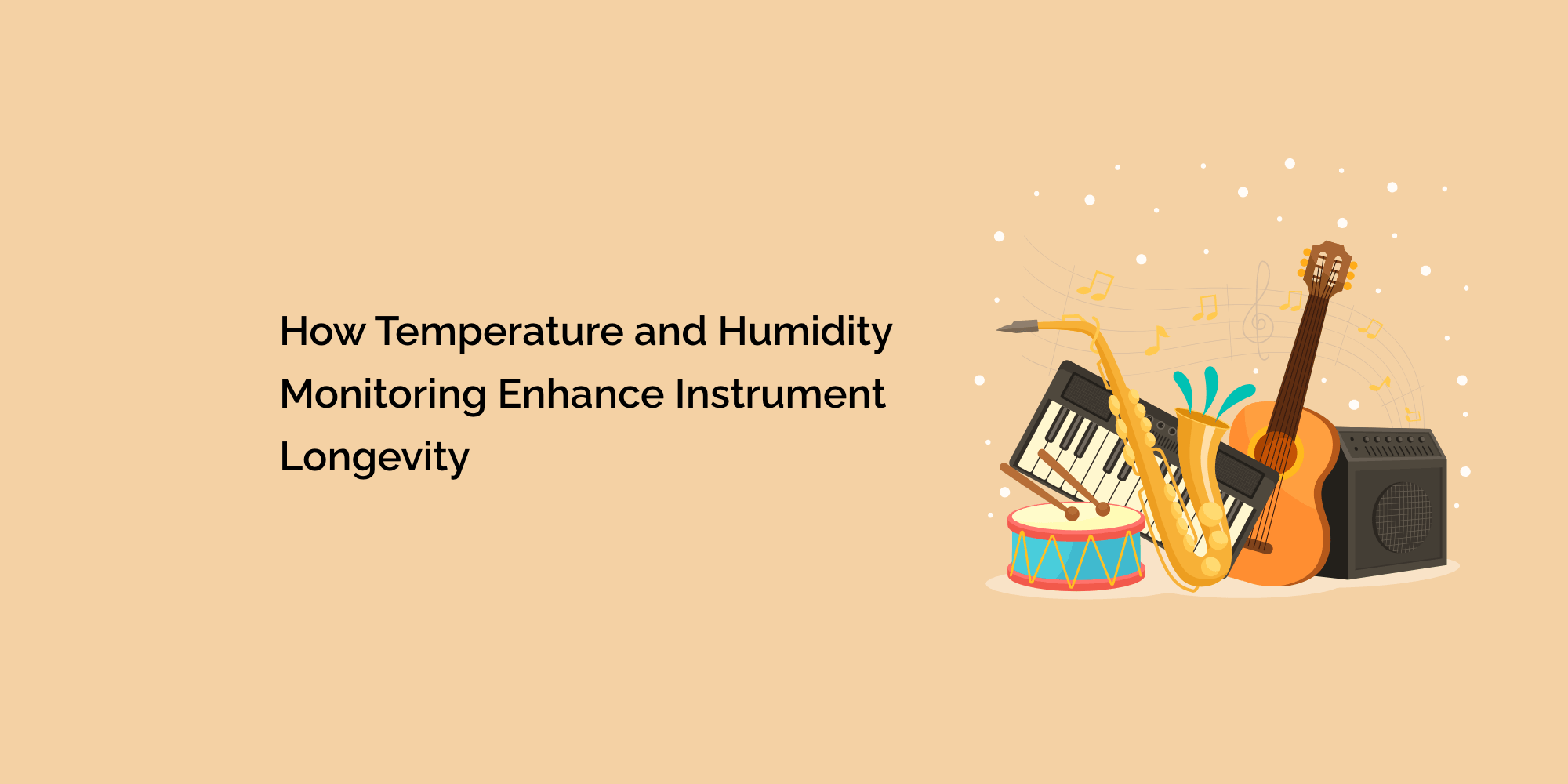Musical instruments are not just objects; they're conduits of emotion, creativity, and cultural heritage. Their intricate craftsmanship and delicate materials demand meticulous care to ensure their longevity and optimal performance. Among the various factors that affect instrument preservation, temperature and humidity stand out as primary concerns. In this blog, we delve into the intricate relationship between temperature, humidity, and musical instruments, exploring how monitoring these factors can significantly enhance instrument longevity, safeguarding their artistry for generations to come.
The Intersection of Climate and Craftsmanship:
The intimate relationship between climate conditions and musical instruments is rooted in their construction:
-
Wood Instruments: Wood, a common material in instrument crafting, is sensitive to temperature and humidity changes.
-
Expansion and Contraction: Fluctuations in temperature and humidity cause wood to expand and contract, potentially leading to structural damage.
- Instrument Families: From string instruments like violins to woodwind instruments like clarinets, each family reacts differently to environmental changes.
Understanding Optimal Conditions:
Creating and maintaining optimal conditions is pivotal for preserving instrument integrity:
-
Ideal Temperature Range: The recommended temperature range for most instruments is between 60°F to 70°F (15.5°C to 21.1°C).
- Harmonious Humidity: Maintaining a relative humidity level of 40% to 60% helps prevent wood from drying out or becoming overly moist.
The Science of Preservation:
The significance of temperature and humidity monitoring cannot be overstated:
-
Structural Impact: Consistent climate control ensures instruments remain structurally intact, preventing cracks and warping.
-
Sound Quality: Stable conditions maintain an instrument's tonal qualities, resonance, and overall sound projection.
- Prevention Over Cure: Monitoring empowers musicians to prevent damage rather than seek costly repairs.
Tailored Solutions for Different Instruments:
Different types of instruments require specific climate considerations:
-
String Instruments: Violins, cellos, and guitars benefit from humidity control to prevent changes in tonality due to wood expansion and contraction.
-
Brass Instruments: Trumpets, trombones, and other brass instruments thrive when humidity is controlled to prevent tarnishing and corrosion.
- Pianos: Pianos, with their intricate mechanisms and wooden components, demand steady humidity levels to preserve their intricate workings.
The Impact of Environmental Variables:
Geographical location and seasons contribute to climate challenges:
-
Dry Climates: Extremely dry environments can cause wood to shrink, leading to cracks and misalignment of parts.
- Humid Climates: High humidity can induce swelling, affecting playability and structural stability.
Advancements in Monitoring Technology:
Modern technology offers efficient solutions for instrument preservation:
-
Wireless Sensors: Wireless sensors offer real-time data and are easy to place within instrument cases or storage areas.
-
App Integration: Smart sensors integrate with smartphone apps, enabling remote monitoring and instant alerts.
- Historical Insights: Some sensors provide historical data, enabling musicians to track climate patterns and make informed decisions.
Conclusion:
The marriage of temperature and humidity monitoring with musical instruments is a harmonious blend of science and art. Ensuring instruments remain within the optimal climate range is essential for preserving their structural integrity, sound quality, and cultural significance. By embracing modern technology and adopting smart monitoring solutions, musicians and collectors can extend the life of their cherished instruments, passing down their legacy and enabling future generations to continue creating beautiful melodies.








